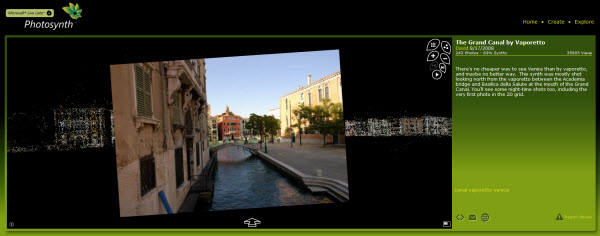Photosynth is a new technology from Microsoft.
It is software that could transform the way we look at digital images.
Using still photos (and more), Photosynth builds a breathtaking new
form of composite image, and lets us navigate them. This service turns multiple photos of a scene or site — say, an art gallery or a building — into a 3-D scene you can virtually "walk" through on the Web.
Ten-years ago I saw something like this; it was the interface to a game called Myst. It was ground-breaking at the time.
In the early phase of adoption for Photosynth, I expect to see things like the 3-D rendering of the Canals in Venice. It is an easily accessible way to explore the concept. Soon, however, this could evolve into a new way to hyper-link a wide range of data, meta-data, and business information.
To get a better idea of what this can do, watch this video from the Ted Conference introducing Photosynth.
Think about how much the web has already changed how you do research? Also, because it is so easy to do now, think how much more research you do. For example, I'm amazed at how often I search Google or Wikipedia. Similarly, I use sites like Digg, Technorati, Regator, and various blogs to find relevant information – even if I didn't know I was looking for it.
Photosynth is different, and in some ways a step beyond, those research tools. It is graphics-centric instead of text-centric. And I can imagine a new type of front-end (a new framework) for accessing information stored virtually anywhere. Consequently, I expect to see a lot more of this, and things like it.
Click here to explore some interesting Synths. You can make your own, too. For example, here is a link to a Photosynth of, my son, Ben's dorm room at Duke. It took him about a half-hour to make it.
Note: you can use arrows on the screen to navigate a Photosynth image; and the "Space Bar" is helpful, too, because it jumps to the next cluster of 3-D images.

